Is there anything more winter to observe in the night sky than glistening star clusters, sparkling away like cosmic Christmas trees or stellar snowglobes?
Winter astronomy is all about those cold nights when transparency is so good, the stars look like brilliant points against an inky darkness descending down to the horizon.
On those evenings there are few things better than getting out the telescope and observing the myriad sparkling star clusters that fill the winter sky.
More winter observing

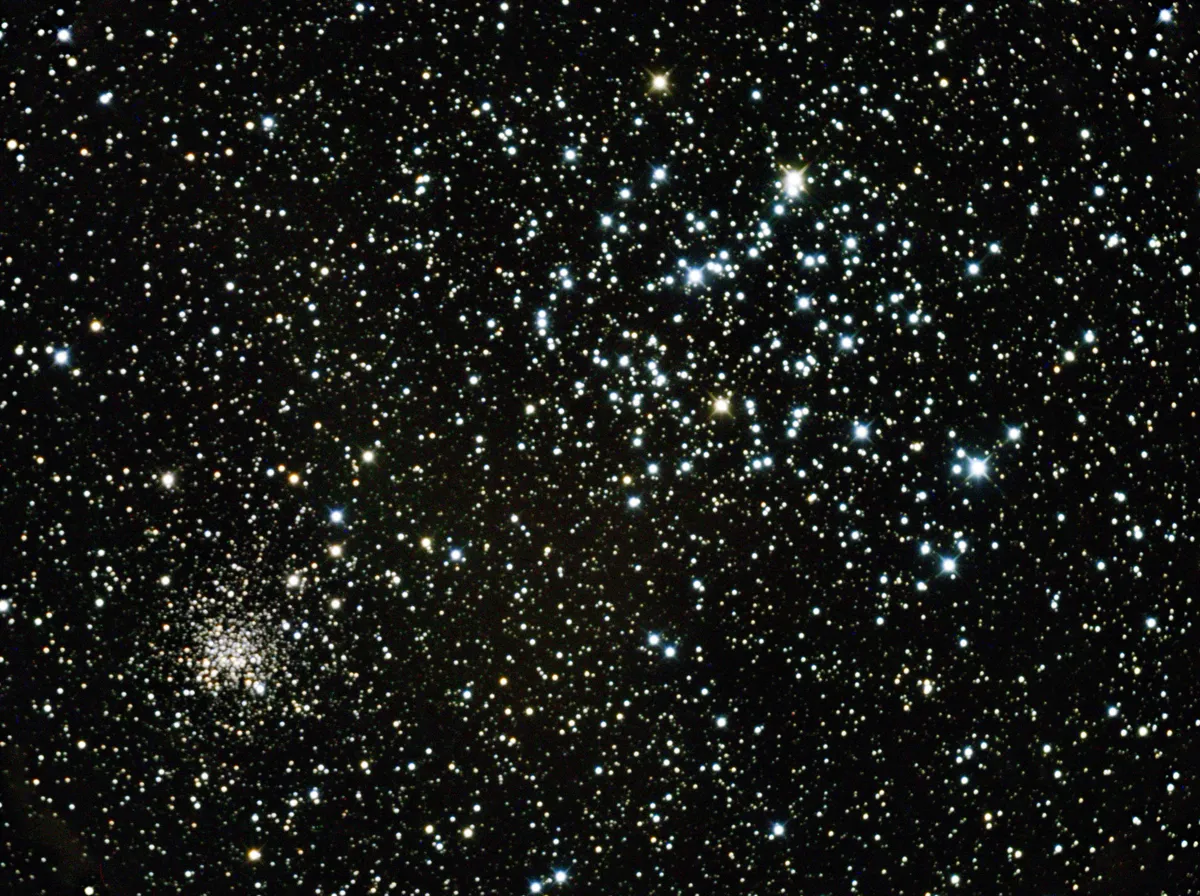
Here are 12 of the season’s best clusters: some favourites and some lesser-known ones.
There should be something for every observer here.
Among the tour there are fine binocular targets like the Pleiades, and perfect objects for small telescopes, like M35.
Some of the other clusters will require a larger aperture instrument to see well.
So get those thermals on and wrap up warm, as together we go in search of some winter’s glittering celestial gems.
12 winter star clusters
NGC 7789
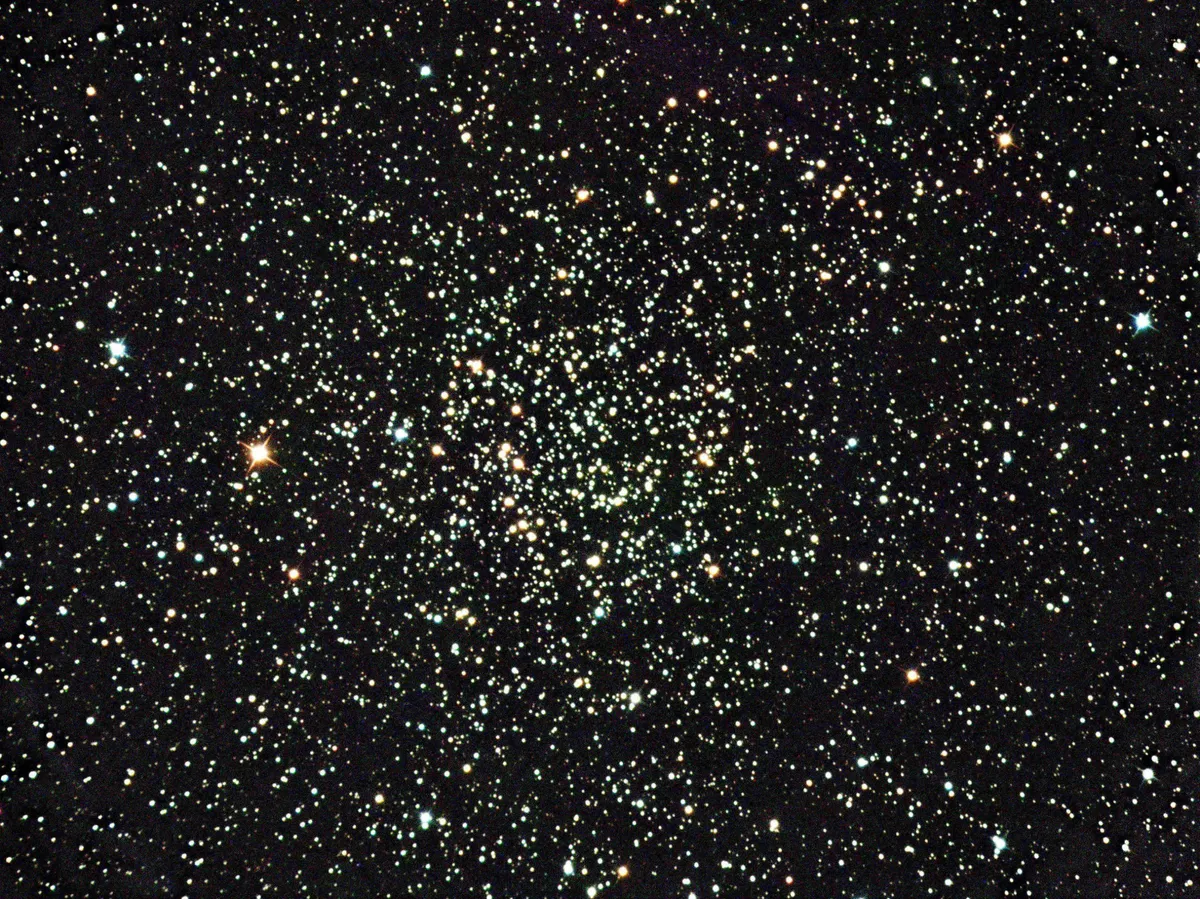
We begin our tour of winter star clusters in the constellation of Cassiopeia. Our target is open cluster NGC 7789, known as Caroline's Rose Open Cluster.
Through 10x50 binoculars the cluster looks like a faint patch of light midway between mag. +4.5 Rho (ρ) Cassiopeiae and mag. +7.0 Sigma (σ) Cassiopeiae.
If you place mag. +2.3 Caph (Beta (β) Cassiopeiae) near the top of the field of view of a pair of 10x50s the cluster will be in the centre.
Through an 8-inch scope, using a magnification of around 80x, the cluster appears as a smattering of stars that become more numerous with averted vision.
To my eyes the cluster seems to dissolve into its surroundings towards its northeastern edge.
NGC 752
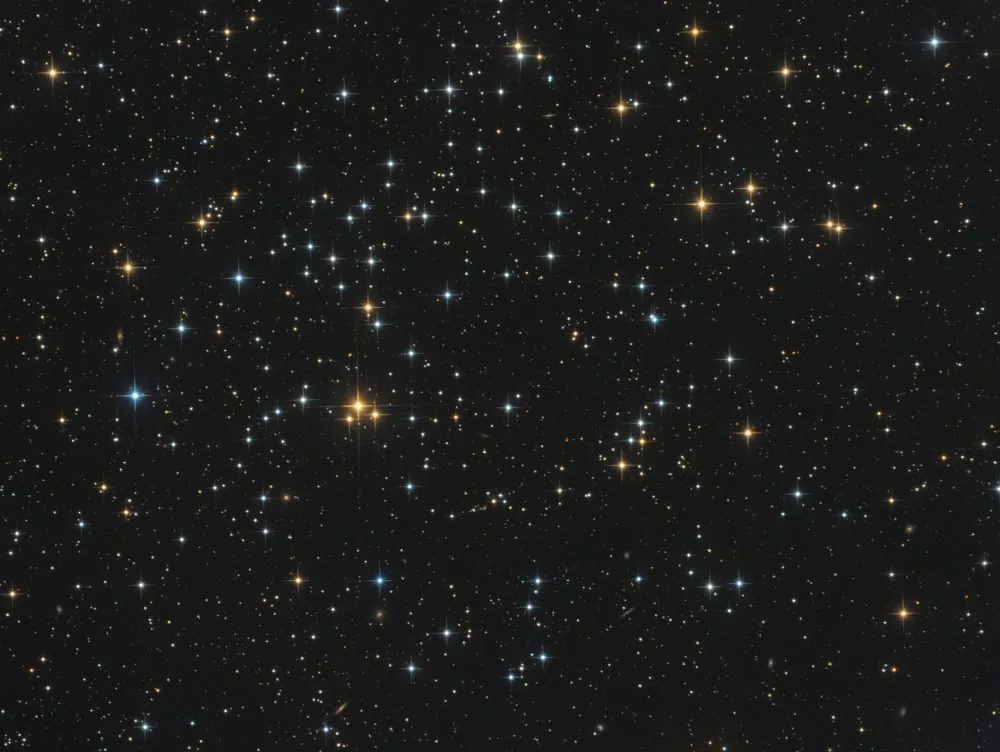
Open cluster NGC 752 in Andromeda is fairly easy to find with a pair of 10x50 binoculars using mag. +5.3 star 7 Trianguli and mag. +3.0 Beta (β) Trianguli as ‘pointers’ to direct you northwest towards the cluster.
You’ll know you’re in the right place as there’s a conspicuous close pair of stars (mag. +5.7 56 Andromedae and mag. +5.9 HD 11727) very near the cluster.
In an 8-inch telescope with a magnification of around 50x the cluster, with several gently curving arcs of stars, practically fills the field of view – a beautiful sight anda taster of more splendours still to come.
M34
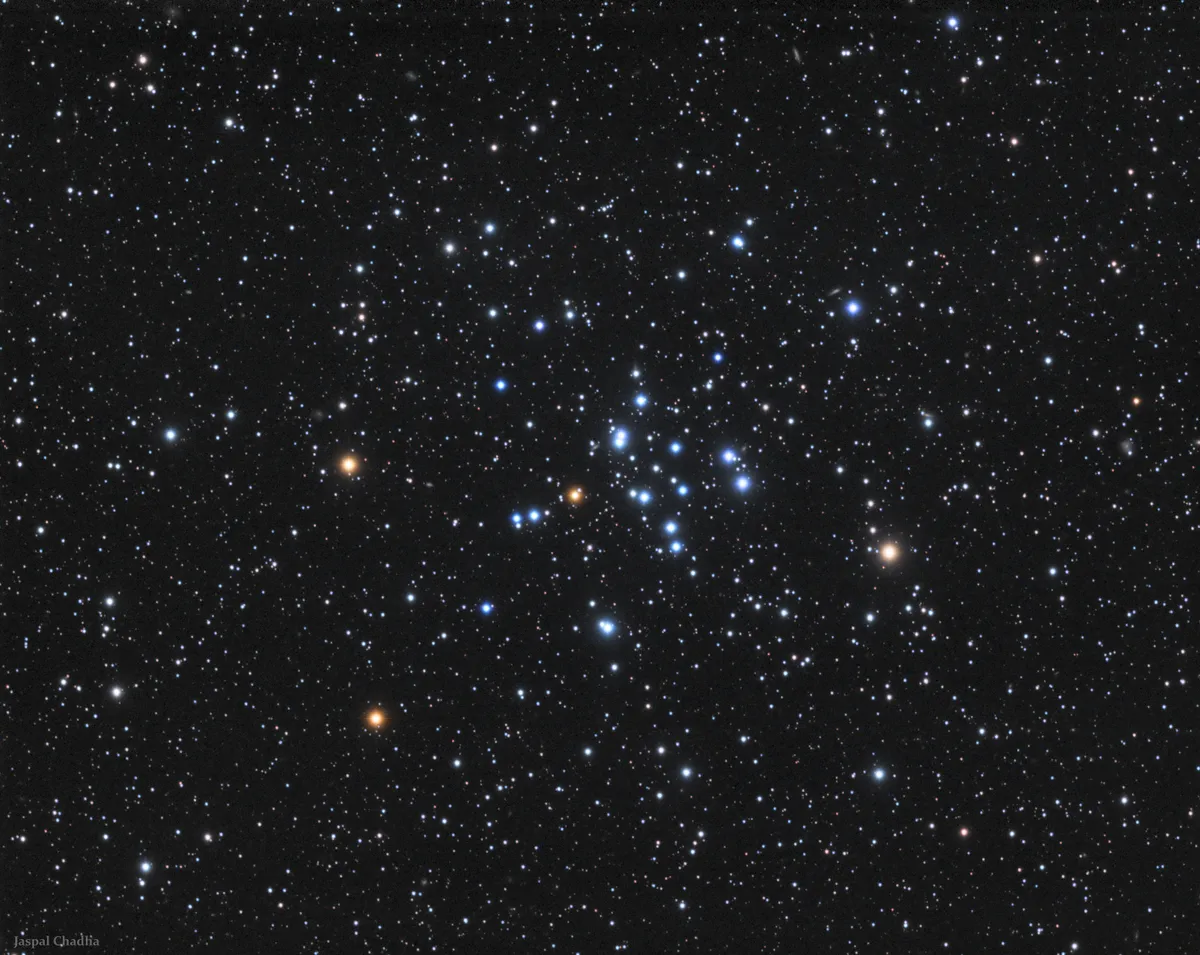
We don’t have to go far for our next target, the open star cluster M34, which sits just under 10º away in Perseus.
In an 8-inch scope, using a magnification of roughly 50x, M34 is an exquisite sight, appearing as a collection of loosely scattered stars seemingly arranged in pairs.
This is definitely a beautiful target for a wide-angle eyepiece. The cluster appears compact and bright in 10x50 binoculars.
To find it in 10x50s, place the bright, mag. +2.1 star Algol (Beta (β) Persei) near the upper-left edge of the field of view; M34 will then be in the bottom right.
Through binoculars several of the cluster stars are clearly visible with direct viewing, while a few more come into view with averted vision.
The Pleiades

From Perseus we hop into nearby Taurus and a truly spellbinding winter object, easily visible to the naked eye: the Pleiades.
Also designated M45, it is arguably the most striking open cluster in the night sky and probably the most famous of all winter star clusters.
In most long focal length telescopes you’ll struggle to fit it all in the eyepiece, and at 50x magnification the central region of the cluster simply appears as a spectacular field of blazing blue stars.
For us, though, the Pleiades are made for binoculars, and through a pair of 10x50s from a dark-sky site they are a mesmerising sight, taking on an almost three-dimensional appearance.
One of our favourite binocular details in the cluster is the curving chain of stars that runs from the vicinity of mag. +5.4 HD 23753 in the direction of mag. +2.9 Alcyone (Eta (η) Tauri).
Trapezium Cluster
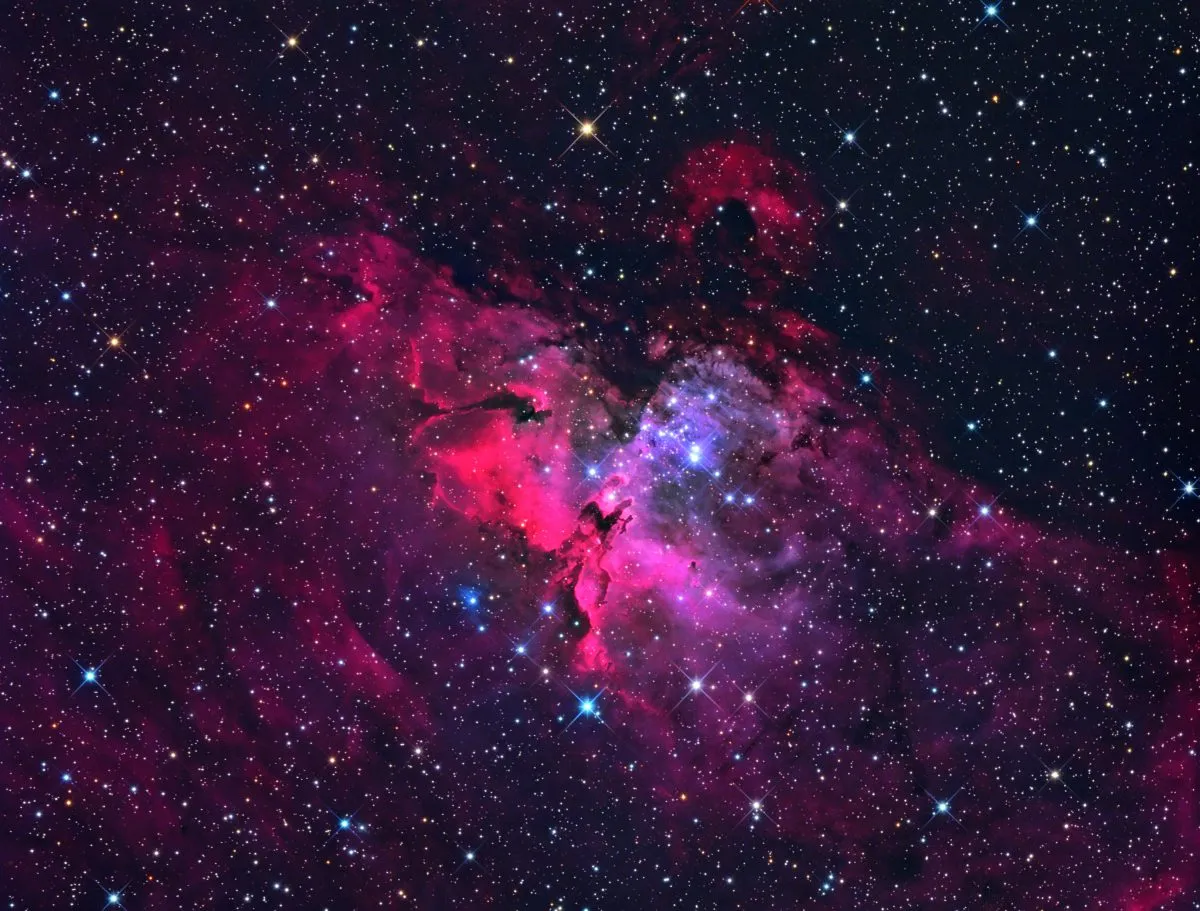
If you can pull yourself away from the Pleiades, it’s now time to move on to our next target, which lies across the border in the Orion constellation.
The young Trapezium Cluster provides a different view of an open star cluster compared to the other winter star clusters we’ve observed so far.
That's because it’s still embedded within, and surrounded by, the nebula from which it formed.
This is the the famous Orion Nebula, M42, which sits below Orion’s Belt.
The Trapezium is too small to resolve clearly in small binoculars, but in an 8-inch scope with a magnification of approximately 50-80x the view is breathtaking.
The cluster appears as four points of light set at the tip of a dark ‘finger’ of nebulosity that extends into the bright inner part of M42.
M79
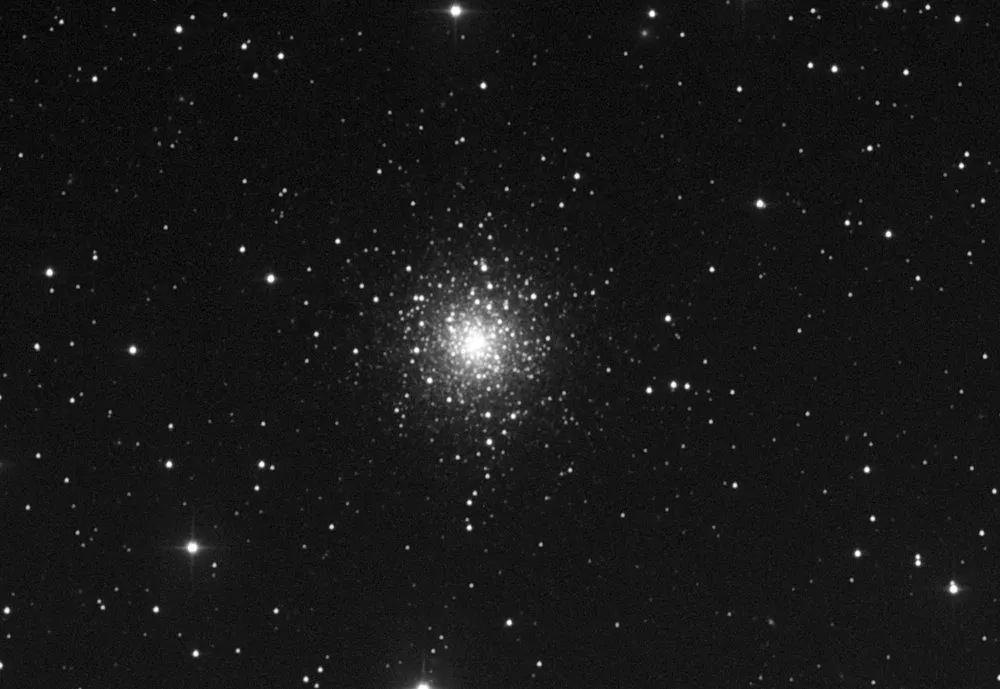
We’re now going to move almost due south by roughly 19º, towards the constellation Lepus.
For UK observers, you’ll immediately see that this takes us close to the horizon, meaning you’ll need a clear southern view and transparent skies for this next cluster.
The reason we’ve ventured in this direction is that our next target is a rarity in this part of the winter sky: a globular cluster, M79.
It was too faint for us to see using 10x50 binoculars the last time we looked, but in an 8-inch scope with around 80x magnification it appeared as a small, faint and diffuse patch of light, with no hint of resolved stars.
While it might not have the glittering grandeur of some of our previous winter star clusters, it’s nonetheless an interesting object to tick off here.
M47
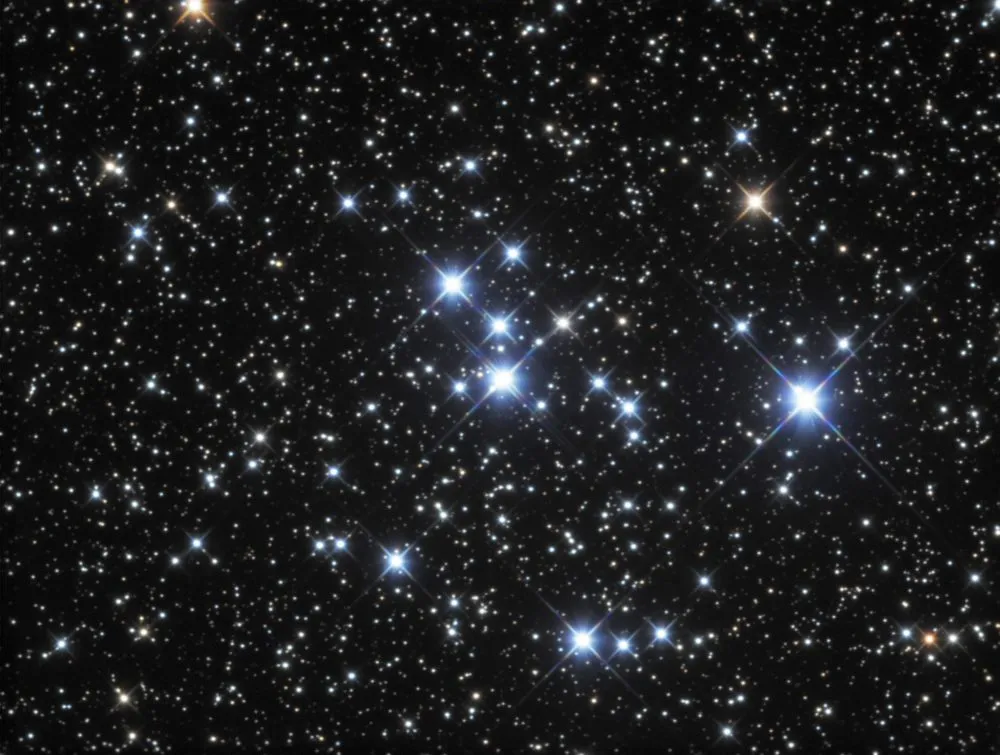
Compared to M79, our next target is a much easier spot. Open cluster M47 can be found in the constellation of Puppis.
As you make your way there, you’ll head past the dazzling, mag. –1.5 Sirius (Alpha (α) Canis Majoris).
Sirius, known as the brightest star in the sky, is actually a handy starting point if you’re searching for the cluster in binoculars.
With a typical pair of 10x50s place Sirius in the lower part of the field and scan east; very soon you’ll reach the cluster.
It’s interesting to compare M47 with its neighbour, M46, which will be in the same field of view with a pair of 10x50s.
To our eyes the latter appears fainter and less well resolved in the binoculars.
In an 8-inch scope with around 80x magnification, M47 appears as an attractive, loosely-scattered collection of relatively bright stars including several chains.
M50
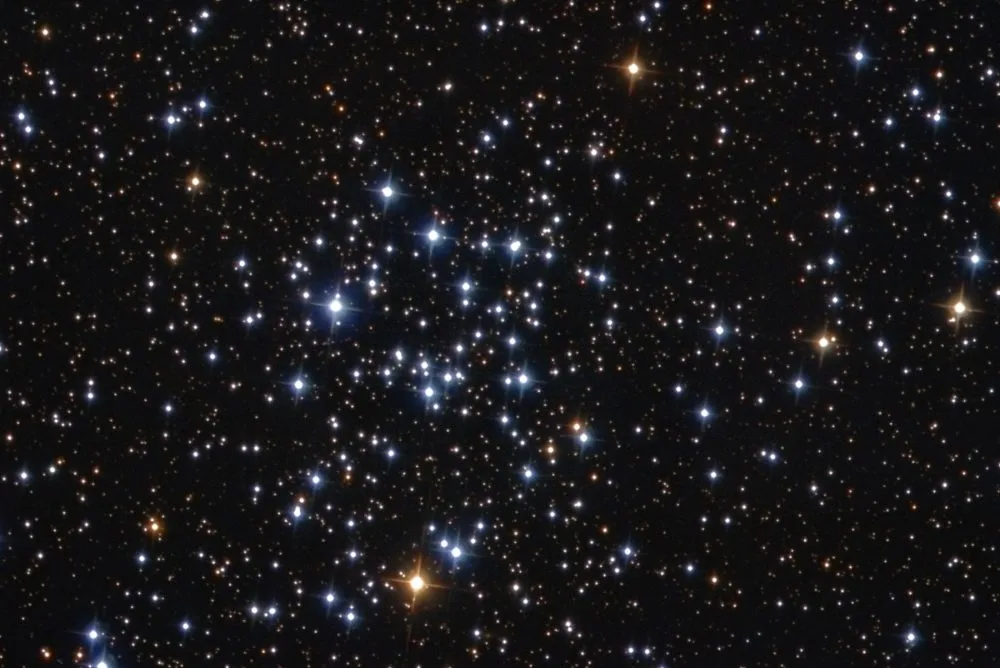
Our next target, the open cluster M50, lies about 10º away in the neighbouring constellation of Monoceros and, like M47, sits among the star fields of the winter Milky Way.
If you observed M47 and M46 with binoculars, you can scan in a northwesterly direction to pick M50 up.
Alternatively you can go back to brilliant Sirius and from there ‘star hop’ roughly north-northeast to mag. +4.0 Theta (θ) Canis Majoris before making a final hop to M50 itself.
There’s a conspicuous diamond of stars next to the cluster that should aid identification in binoculars.
In 10x50s, M50 appears rather fuzzy and barely resolved, while in an 8-inch scope, using a magnification of approximately 80x, it appears as a pretty scattering of stars.
NGC 2244
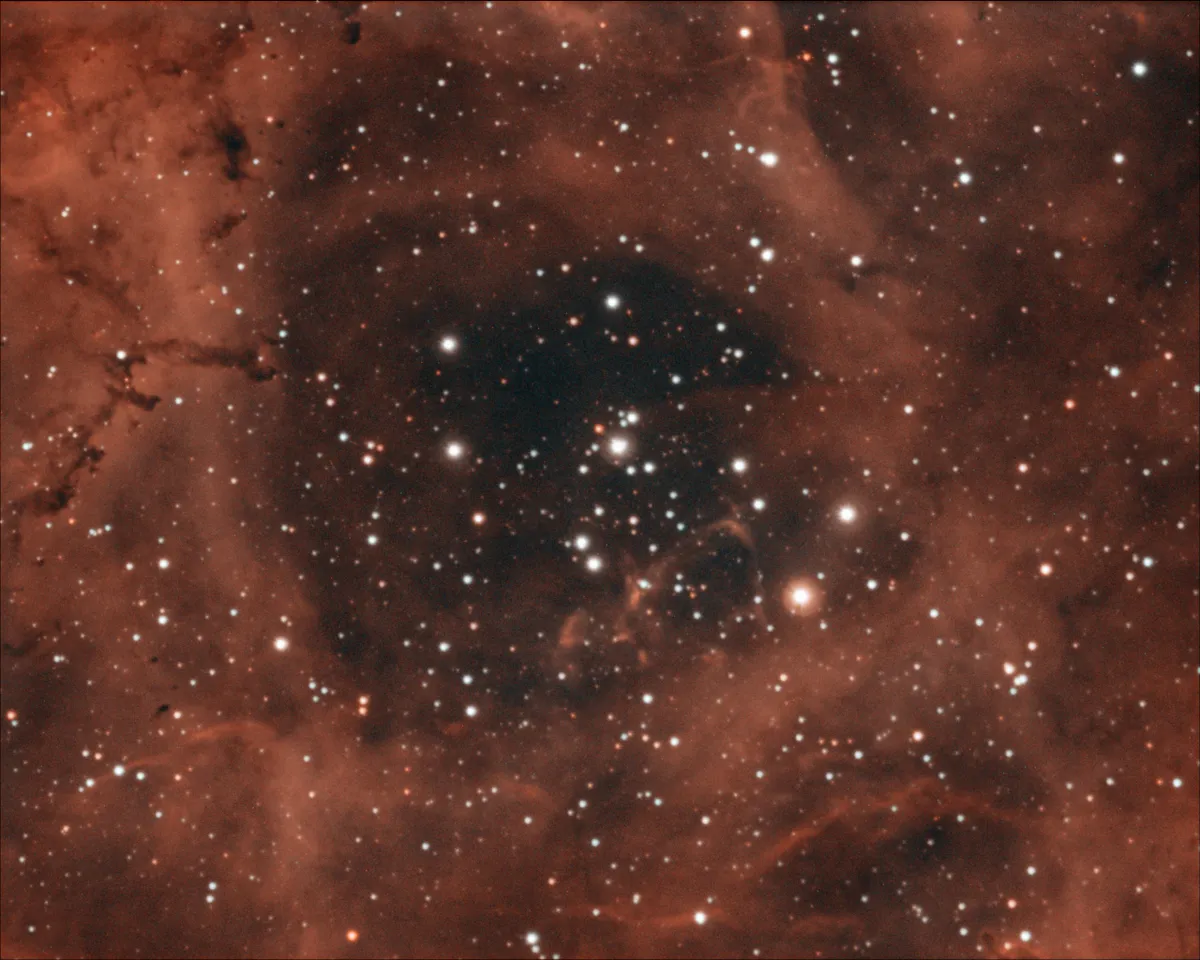
We’re staying in Monoceros now, but moving north and west a little to explore two winter star clusters that lie in the swathe of the Milky Way between mag. +0.5 Betelgeuse (Alpha (α) Orionis) and mag. +0.4 Procyon (Alpha (α) Canis Minoris).
The first is the open cluster NGC 2244. Astrophotographers will be familiar with this object as it’s the star cluster that lies at the centre of the beautiful Rosette Nebula.
In 10x50 binoculars the cluster has a very obvious and compact rectangle shape, which is made up of what appears to be – in 10x50s at least – three pairs of stars.
To find the cluster in binoculars simply sweep east and a little way south from Betelgeuse.
In an 8-inch scope with roughly 50x magnification many more cluster stars become apparent, making this grouping a fine sight in a wide-angle eyepiece.
Christmas Tree Cluster
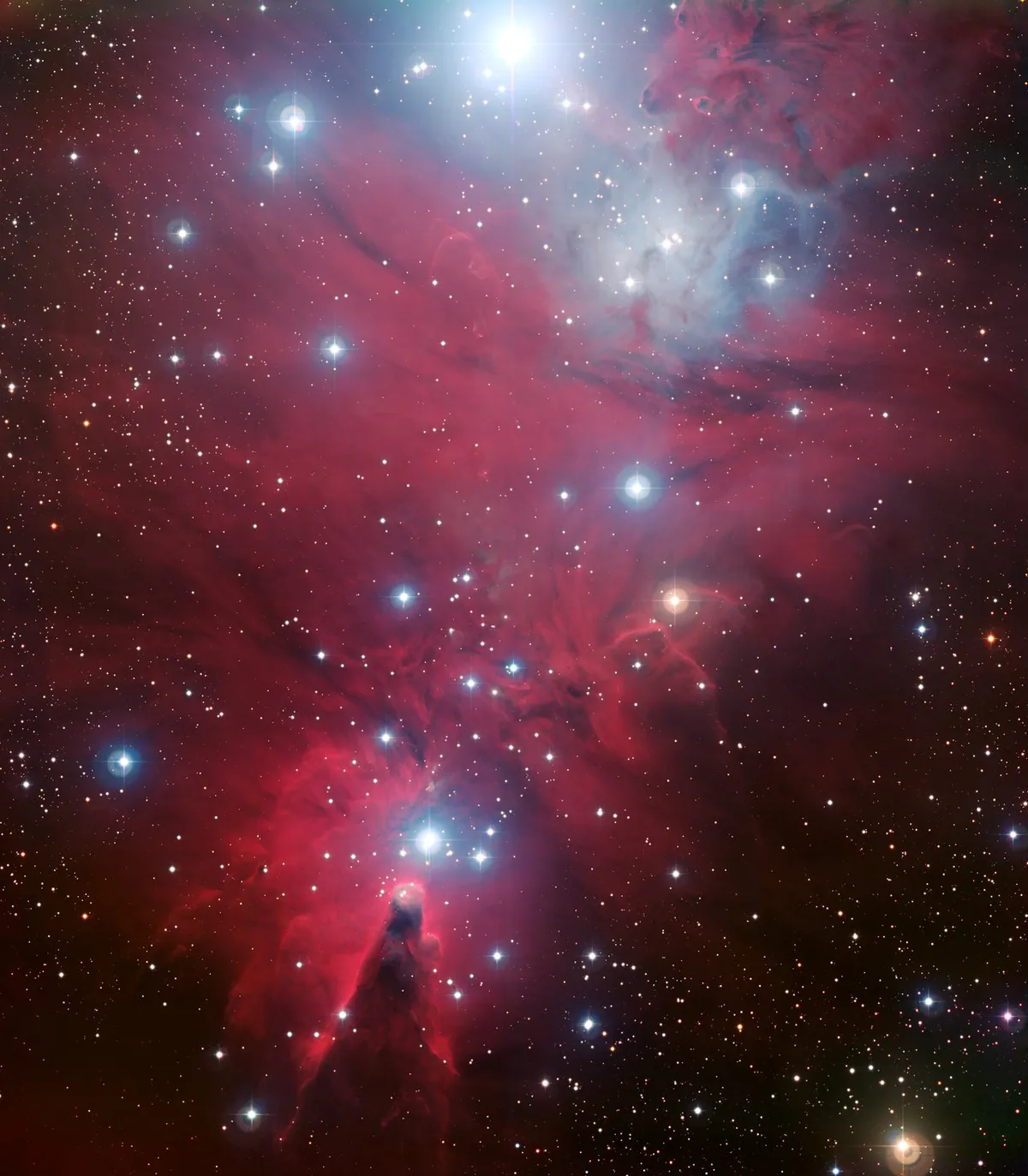
The second object we’re going to visit in this part of the sky is the beautiful Christmas Tree Cluster, NGC 2264.
Could there be any better name for one of our winter star clusters? Not to be confused of course with the Christmas Tree Galaxy Cluster recently imaged by the James Webb Space Telescope.
So close is the Christmas Tree Cluster to NGC 2244 that the two just about fit in the same field of view with a pair of 10x50 binoculars.
All you need to do is scan upwards by 5º in a roughly north easterly direction from NGC 2244.
The little upside-down triangular shape of the ‘tree’ is visible in 10x50s and would be an ideal target for larger binoculars.
If you’re observing with a telescope, use a low magnification and you’ll have no problem making out
the tree’s shape.
The mag. +7.8 star 15 Monocerotis marks the Christmas Tree Cluster's trunk.
NGC 2281

Our penultimate target sits far from Monoceros in the constellation of Auriga.
Auriga of course has some beautiful open clusters in it – notably M36, M37 and M38 – but it’s NGC 2281 that we’re looking for today.
In an 8-inch scope at a magnification of roughly 50x, it appears as a pretty collection of a few loosely scattered stars with a little ‘diamond’ of what look like slightly brighter stars at its heart.
In 10x50 binoculars the cluster appears very small but, even from a suburban viewing site, it looks like it is set in a long, rich star field ‘island’.
To help identify the cluster in binoculars there’s a conspicuous line of stars that runs north to south nearby.
These include mag. +4.8 50 Aurigae, mag. +5.7 51 Aurigae and mag. +5.3 52 Aurigae.
M35
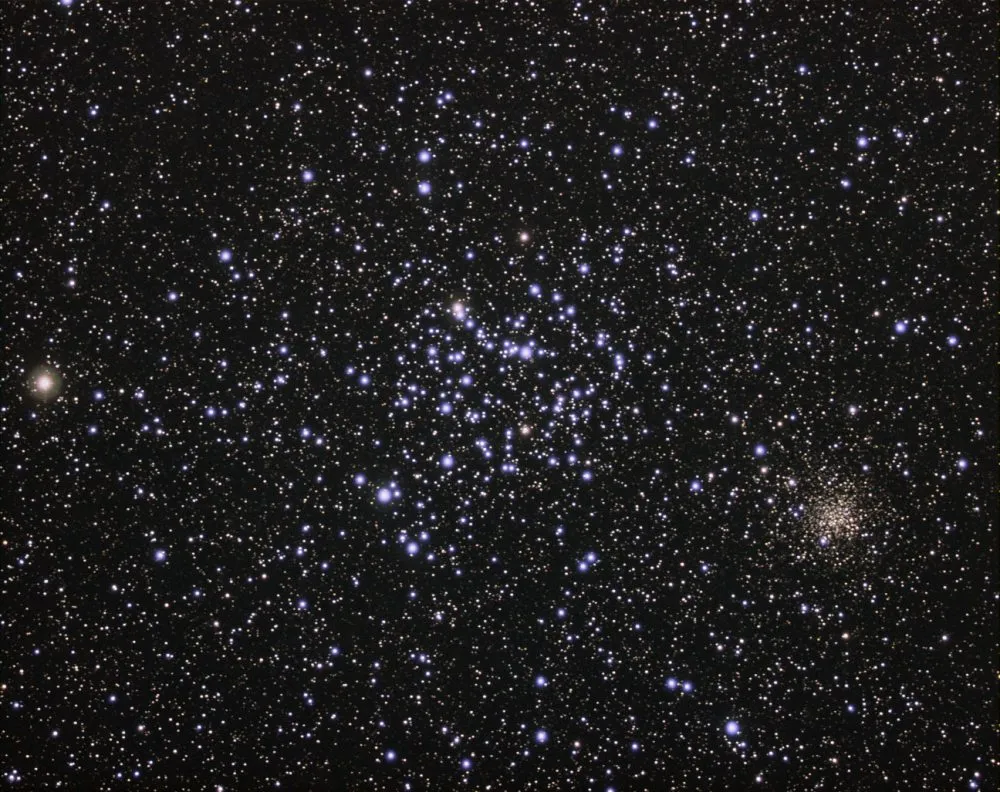
With our tour of some of winter’s finest star clusters now approaching its end, we’re going to finish with an especially beautiful object, the open cluster M35 in the constellation of Gemini.
It’s easily seen in 10x50 binoculars. Careful observation will show its granular appearance, something that becomes more clearly visible if you use averted vision.
To locate M35 in binoculars use mag. +1.9 Alhena (Gamma (γ) Geminorum) as the starting point of a star hop that goes roughly northwest towards mag. +4.16 Nu (ν) Geminorum before curving in the direction of mag. +2.8 Mu (μ) and mag. +6.0 Eta (η) Geminorum, and the cluster itself.
In an 8-inch telescope using around 50x magnification, M35 really is mesmerising with myriad stars in view.
In particular, look for the striking bow-shaped chain of stars that curves across the cluster’s northeast corner.
How to photograph winter star clusters
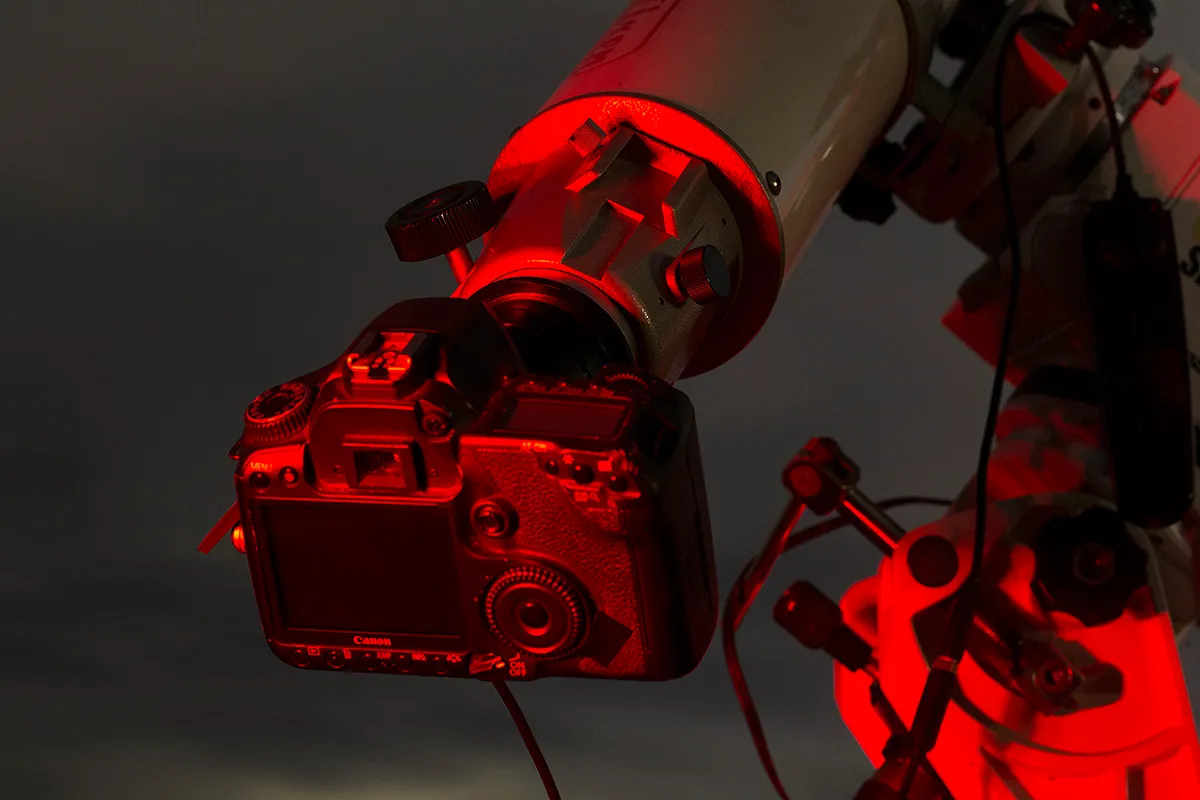
Many of the winter star clusters covered in this article make for beautiful astro imaging subjects.
Some of the brighter ones, like M35, are also ideal ‘starter’ targets if you’re just beginning to experiment in imaging with a telescope and motorised mount.
In general, as long as you’re creative with the composition, it doesn’t matter what the focal length of your telescope is
Although some smaller, fainter, clusters ideally need long exposures through a long focal length telescope to show them well.
Long focal length imaging requires a tracking mount that follows the sky smoothly and accurately, perhaps aided by an autoguiding system.
But that’s not to say only setups with a telescope and a driven mount can snap striking cluster images.
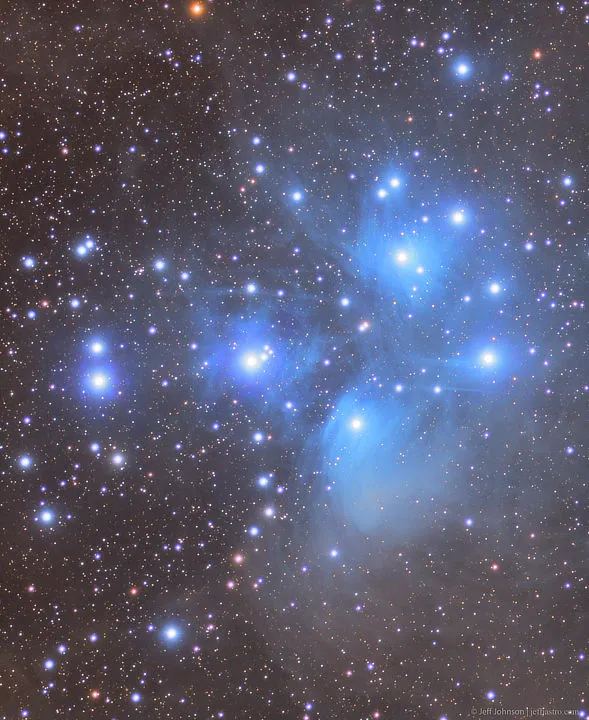
The Pleiades, for example, are bright enough and large enough on the sky that a DSLR and kit lens mounted on a static photo tripod can produce pleasing wide-field images of the cluster sitting over a skyline.
You’ll need to keep the lens aperture wide open and use a relatively high ISO setting, perhaps in the region of 1600-3200, for shots like these.
As in all fields of astrophotography, careful processing is key when it comes to star clusters.
As most cluster images are essentially numerous white dots against a dark background, it can be easy to ‘clip’ the black point of an image in an attempt to improve contrast or perhaps hide a light pollution gradient.
The ‘clipping’ occurs if you move the leftmost slider in the levels tool of image processing software too far to the right.
This will result in an image with a harsh contrast and, worse, you may hide faint cluster stars and other subtle details.
Similarly, be careful not to ‘stretch’ (brighten) a cluster image too far – either using the levels or curves tools.
This can blow out brighter stars, overwhelming any colouration they may be showing.
What are your favourite winter star clusters? Have you managed to photograph them? Let us know by emailing contactus@skyatnightmagazine.com.
This article appeared in the February 2018 issue of BBC Sky at Night Magazine.
